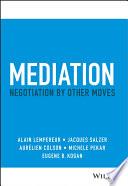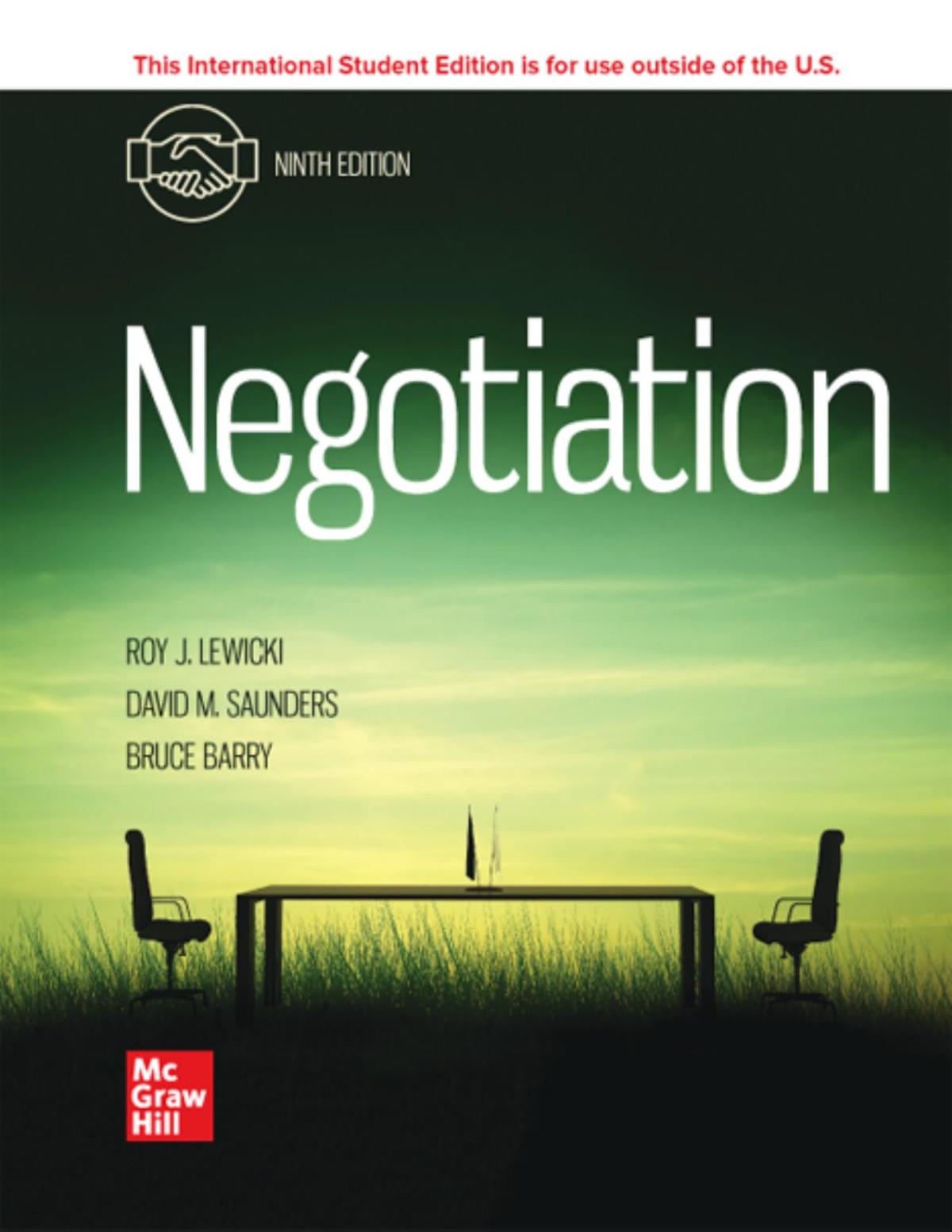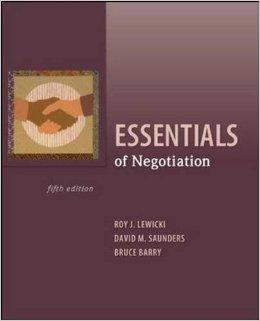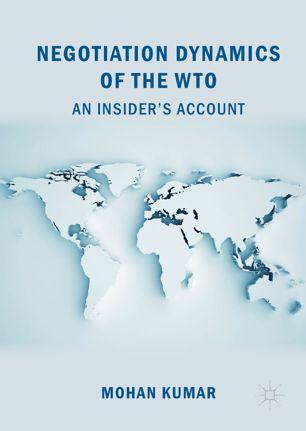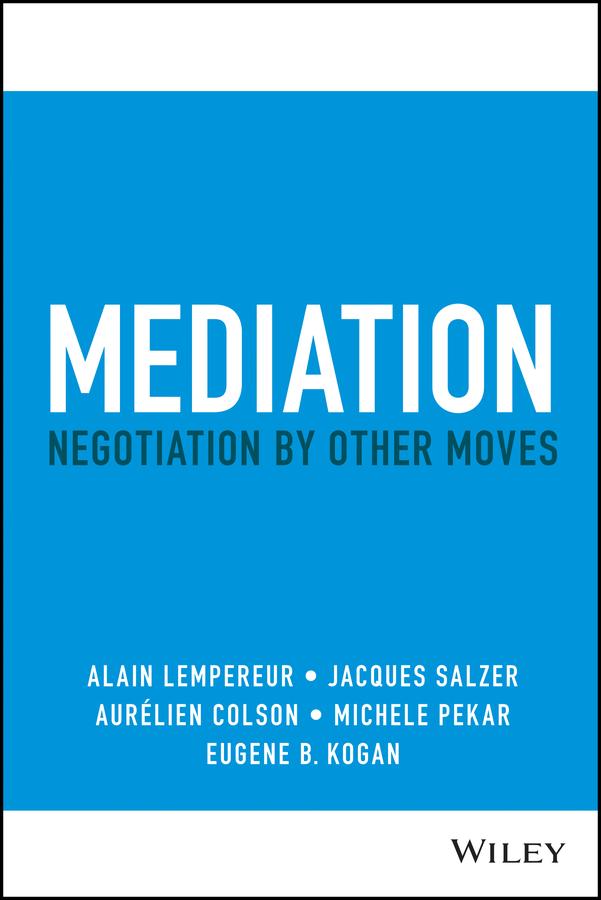Mediation : Negotiation by Other Moves 1st Edition Alain Lempereur Visit to download the full and correct content document: https://ebookmass.com/product/mediation-negotiation-by-other-moves-1st-edition-alai n-lempereur/
More products digital (pdf, epub, mobi) instant download maybe you interests ...
Negotiation 9th Edition Lewicki
https://ebookmass.com/product/negotiation-9th-edition-lewicki/
Smooth Moves Marie Harte
https://ebookmass.com/product/smooth-moves-marie-harte-2/
Smooth Moves Marie Harte
https://ebookmass.com/product/smooth-moves-marie-harte/
Smooth Moves Marie Harte
https://ebookmass.com/product/smooth-moves-marie-harte-4/
Smooth Moves Marie Harte
https://ebookmass.com/product/smooth-moves-marie-harte-3/
Contemporary Populists in Power 1st Edition Alain Dieckhoff (Editor)
https://ebookmass.com/product/contemporary-populists-inpower-1st-edition-alain-dieckhoff-editor/
A New Dawn for Politics 1st Edition Alain Badiou https://ebookmass.com/product/a-new-dawn-for-politics-1stedition-alain-badiou/
Instructor Manual For Essentials of Negotiation 5th Edition by Roy Lewicki , Bruce Barry , David Saunders
https://ebookmass.com/product/instructor-manual-for-essentialsof-negotiation-5th-edition-by-roy-lewicki-bruce-barry-davidsaunders/
Negotiation Dynamics of the WTO 1st ed. Edition Mohan Kumar
https://ebookmass.com/product/negotiation-dynamics-of-thewto-1st-ed-edition-mohan-kumar/
Praisefor Mediation “Intoday’sworldwearecalledtobemediatorsinalmosteverythingwedo:mediationhas becomeanessentialaspectoftrueleadershipandsuccess.Thisbookisamustread,notjust forexpertsandpractitioners,butalsoforwhoeverwantstofosterinclusivenessandreciprocal understanding.”
EnricoLetta,DeanoftheParisSchoolofInternationalAffairsand formerPrimeMinisterofItaly
“Asevidencedinthisbook,mediationbenefitsallspheresofsociety.Aprominentexampleis theuseofmediationbypatrolpoliceofficers,whichinfusesthemwithbothproblem-solving andattentiontodignity.Itpromotesnonviolentpositiveinteractionsbetweencitizensand police.”
ChristopherC.Cooper,Attorney,Mediator, formerWashingtonD.C.PoliceOfficer&U.S.MarineSergeant
“Ialwaysrecommendthisbooktostudents,becausetheauthors’complementaryprofilesand lensesaccountwithtalentandacuityforthepeacefulanddemocraticusesofmediation.”
JacquesFaget,ProfessorofLawandSociology,UniversityofBordeaux
“Militarychiefshaveadutytomastertheartofwar,butalsoofmediation.Hundredsofofficersfrom120countriesbenefittedfromthisbook’sprinciplesandusedthemafterwardsin operations.”
LoïcFinaz,Vice-Admiral(Ret.),WarCollege(France)
“Foranyoneinterestedinmediationorasareferenceforexperiencedpractitioners,thisbook isanaccessibleandcompleteresourcewrittenbyseasonedandworld-classmediators.Many EUdiplomatsandadvisershavealreadybenefitedfromitssubstanceformorethanadecade.”
AntjeHerrberg,Mediator,EuropeanExternalActionService, andfounderofMediatEUr
“Thisthought-provokingbookisanassetforthosewhoarekeenonachievingdesiredresults indiplomaticmediation.Itwillguideareadertosuccess,evenwhenthechanceslookremote.”
OlegIvanov,DiplomaticAcademy,MinistryofForeignAffairs(Russia)
“OurmissionistosupportthecapacityofIsraelis,Palestiniansandotherregionalactors tonegotiatemoreeffectively.Weneedtoleveragethemediationmethodsofthisbookevery day.”
IhabKhatib&LiorFrankiensztajn,ExecutiveDirectors,NegotiationStrategiesInstitute, Jerusalem-basedNGO
“IfyouloveFrenchcuisine,Escoffier’s GuidetoModernCookery hasbeenareferencefor100 years.Ifyouaremoreintomediation,fromnowon,youcanturnto Mediation.Itisanoutstandingcollectionofeverythingpracticalyouneedtoknow:fromscanningthelandscape,
preparingthegrounds,decidingonprinciples,toleadingthroughtheupsanddownsofmediation,preventingmistakesandgettingyourvaluesystemsright.”
PeterMaurer,PresidentoftheInternationalCommitteeoftheRedCross
“Howmightmediatorsfacilitatetheresolutionofconflictbyempoweringtheparties themselvestonegotiatemoreeffectively?Bothacademicsandpractitionersneedthisbook: aftersurveyingexistingmediationpracticesandoutliningrelevantprinciplesitprovides thoughtfuladviceonhowbesttostructurethemediationprocessandpromotetheparties’ betterunderstandingoftheirconflictanddevelopandassessalternativesolutions.”
RobertMnookin,MediatorandLawProfessor, HarvardLawSchoolandProgramonNegotiation
“Thisbookisessentialformediatorsandstaffworkinginhumanitarian,development,peace andsecuritycontexts.Havingspentover30yearswiththeUnitedNationsinemergencies inSomalia,Rwanda,Burundi,Gaza,Iraq,andSyria,Ihavewitnessedtheconsequencesof conflicts.Today’sworldneedsmediationbothforpreventionandconflictresolution.Myone take-awayfromthebookisthatmediationisanart,askillthatoneneedstopracticeandcan learn.Ihighlyrecommendthisbook.”
PanosMoumtzis,UnitedNationsAssistantSecretaryGeneral; ExecutiveDirector,GlobalExecutiveLeadershipInitiative,and formerHumanitarianCoordinatorfortheSyriacrisis
“Asanegotiationadviser,Ihaveoftenobservedthecriticalimportanceofresponsiblemediation.Thisbrilliantbookoffersthesecretkeystodeliveringsuccessforallsides.”
KalypsoNicolaïdis,ProfessorofInternationalRelations, OxfordUniversityandEuropeanUniversityInstitute
“Withoutappropriateknowledgeandpreparation,mediationeffortsoftenfail.Theauthors optimizethewholemediationprocess.”
TetsushiOkumura,ProfessorofManagement,ToyoUniversity(Tokyo)
“Theverysubtitleofthiswiseandcomprehensiveguide—Mediation:NegotiationbyOther Means—revealsadeepandunusualunderstandingoftheintimaterelationshipoftwoimportantprocessesthatarenormallytreatedaswhollyseparate.Drawingonsignificantresearch andextensiveexperienceacrossmultiplecontinents,thisdistinguishedinternationalgroup ofco-authorswillvaluablyenlightenreaderswhoseektoemploythispowerfulthird-party methodofconflictresolutionandmanagement.”
JamesK.Sebenius,ProfessoratHarvardBusinessSchoolandDirector, HarvardNegotiationProject
“Withrisingconflictsintoday’sworld,mediationisneededmorethanever.Hereisalucid andinsightfulbookonthecontemporarypracticeofmediation,highlypracticalandusefully illustratedwitharangeofgoodexamples.Itisagenuinepleasuretorecommendthisexcellentbooktostudents,professionalmediators,andindeedanyonewhopracticesmediation informally,inotherwords,mostofus.”
WilliamUry,co-author,GettingtoYes,andauthor,TheThirdSide
MEDIATION ALAINLEMPEREUR JACQUESSALZER AURÉLIENCOLSON MICHELEPEKAR EUGENEB.KOGAN Thiseditionfirstpublished2021.
©2021byAlainLempereur,JacquesSalzer,AurélienColson,MichelePekar,andEugeneB.Kogan
Registeredoffice
JohnWiley&SonsLtd,TheAtrium,SouthernGate,Chichester,WestSussex,PO198SQ,United Kingdom
Fordetailsofourglobaleditorialoffices,forcustomerservicesandforinformationabouthowtoapply forpermissiontoreusethecopyrightmaterialinthisbookpleaseseeourwebsiteatwww.wiley.com.
Allrightsreserved.Nopartofthispublicationmaybereproduced,storedinaretrievalsystem,or transmitted,inanyformorbyanymeans,electronic,mechanical,photocopying,recordingor otherwise,exceptaspermittedbytheUKCopyright,DesignsandPatentsAct1988,withouttheprior permissionofthepublisher.
Wileypublishesinavarietyofprintandelectronicformatsandbyprint-on-demand.Some materialincludedwithstandardprintversionsofthisbookmaynotbeincludedine-booksorin print-on-demand.IfthisbookreferstomediasuchasaCDorDVDthatisnotincludedinthe versionyoupurchased,youmaydownloadthismaterialathttp://booksupport.wiley.com.Formore informationaboutWileyproducts,visitwww.wiley.com.
Designationsusedbycompaniestodistinguishtheirproductsareoftenclaimedastrademarks.All brandnamesandproductnamesusedinthisbookaretradenames,servicemarks,trademarksor registeredtrademarksoftheirrespectiveowners.Thepublisherisnotassociatedwithanyproductor vendormentionedinthisbook.
LimitofLiability/DisclaimerofWarranty:Whilethepublisherandauthorhaveusedtheirbesteffortsin preparingthisbook,theymakenorepresentationsorwarrantieswithrespecttotheaccuracyor completenessofthecontentsofthisbookandspecificallydisclaimanyimpliedwarrantiesof merchantabilityorfitnessforaparticularpurpose.Itissoldontheunderstandingthatthepublisheris notengagedinrenderingprofessionalservicesandneitherthepublishernortheauthorshallbeliable fordamagesarisingherefrom.Ifprofessionaladviceorotherexpertassistanceisrequired,theservices ofacompetentprofessionalshouldbesought.
LibraryofCongressCataloging-in-PublicationData
Names:Lempereur,Alain,author.|Salzer,Jacques,author.|Colson, Aurélien,author.|Pekar,Michele,author.|Kogan,EugeneB.,author.
Title:Mediation:negotiationbyothermoves/AlainLempereur,Jacques Salzer,AurélienColson,MichelePekar,EugeneB.Kogan.
Description:Chichester,WestSussex,UnitedKingdom:Wiley,2021.| Includesbibliographicalreferencesandindex.
Identifiers:LCCN2021008530(print)|LCCN2021008531(ebook)|ISBN 9781119768425(cloth)|ISBN9781119805366(adobepdf)|ISBN 9781119805359(epub)
Subjects:LCSH:Mediation.
Classification:LCCK2390.L462021(print)|LCCK2390(ebook)|DDC 303.6/9—dc23
LCrecordavailableathttps://lccn.loc.gov/2021008530
LCebookrecordavailableathttps://lccn.loc.gov/2021008531
CoverDesign:Wiley
Setin11/14ptMinionProbySPiGlobal,Chennai,India 10987654321
IsaynothingtoonethatIcannotsaytotheother,attherighttime,with onlyaslightdifferenceinemphasisandIreportonlythethingsthatare indifferent,orknown,orservebothincommon.Thereisnoreasonfor whichIwouldpermitmyselftolietothem.
MicheldeMontaigne, TheEssays,794B
ACKNOWLEDGMENTS Wethankallthewomenandmenwhohavecontributedtothetheory andpracticeofmediationallovertheworld:mentors,colleagues,friends, researchers,andthousandsofmediatorsandparticipantsinseminarswho influencedthecontentofthisbook.
Weareindebtedtoourmentorsandthepioneers:GrahamAllison,Michel Barnier,BéatriceBlohorn-Brenneur,Jean-PierreBonafe-Schmitt,Jeanne Brett,GuyCanivet,HervéCassan,PierreDrai,JacquesFaget,RogerFisher, ThomasFiutak,SteveGoldberg,AJRGroom,MichèleGuillaume-Hofnung, SergeGuinchard,CharlesJarrosson,HansKelman,EtienneLeRoy,JeanClaudeMagendie,PeterMaurer,MichelMeyer,BobMnookin,Christopher Moore,JacquelineMorineau,MirkoNikolic,BrunoOppetit,Gérard Pluyette,SimoneRozes,FrankSander,JimSebenius,Jean-François Six,AlanandAriSlifka,HowardStevenson,LarrySusskind,SidTopol, HubertTouzard,BillUry,KeithWebb,AndyWilliams,HowardWolpe,and YvanZakine.
Thisbookwouldnothaveseenthelightofdaybutforourcolleaguesand friends:themembersoftheHarvardProgramonNegotiation,IRENE atESSEC,theKelloggDisputeResolutionResearchCenter,theOxford ProgrammeonNegotiation,includingLilianedeAndrade,Myriam Bacqué,StephenBensimon,ChristianBlanc,LindaBenraïs,Jean-Michel Blanquer,BobBordone,ClaudeBruderlein,NicholasBurns,TessaByer, PaolaCecchi-Dimeglio,EricaChenoweth,AlainChristnacht,Christopher Cooper,TimCullen,JaredCurhan,JocelynDahan,OwenDarbishire, FlorrieDarwin,PierreDebaty,LaurencedeCarlo,JacquesDercourt, BrunoDupré,MartinEuwema,LucFauconnet,LorraineFillion,Pamina Firchow,PaulFisher,MariFitzduff,LiorFrankiensztajn,GaryFriedman,
Bruno-AndréGiraudon,DonGreenstein,Jean-ÉdouardGrésy,Jérôme Grimaud,EricGuérin,SusanHackley,SheilaHeen,SophieHenry,Antje Herberg,JocelyneHervé,JackHimmelstein,DavidHoffman,Sergio JaramilloCaro,IsabellaJean,AlanJenkins,TedJohnson,SandraJones,Peter Kamminga,MichelNoureddineKassa,JamesKerwin,IhabKhatib,Marc Kiredjian,AnneLandois,EnricoLetta,JustinLêvecque,MariaMadison, JosephMaïla,PatriciaMalbosc,FrancescoMarchi,LizMcClintock,Gerry McHugh,OliverMcTernan,PhilipMilburn,JordanMorgan,NicolasMottis, AnaideNahikian,KalypsoNicolaïdis,EugeneNindorera,FabienNsengimana,CharlottePailleux,RicardoPerezNuckel,GabriellePlanes,BillRapp, JimReiman,HerveRemaud,TinaRobiolle,MoniqueSassier,Veronique Schneider,DanShapiro,LindaSinger,MarianneSouquet,GuhanSubramanian,ArnaudStimec,ChristianThuderoz,JoëlleTimmermans-Delwart, EmmanuelTronc,MichaelVanRooyen,DavidWeil,andAndreasWenger.
WethankFionaP.Noonanforhercontributiontothetranslationandto ourresearchersandassistants:JuliannaBrill,LaraCazemajou,JaceeCox, KatherineDeCourcy,MichaelDumont,AutumnGalindo,SarahLaMorey, CécileSeguineaud,andEliseWiller.
Finally,wethankourcolleagues,participants,andmediatorsinvarious institutions:BrandeisUniversity,CollegeofEurope,ENA,EcolePolytechnique,EssecBusinessSchool,EuropeanCommission,EuropeanInstitute ofPeace,EuropeanPeacebuildingLiaisonOffice,EuropeanUniversity Institute,UnitedStatesInstituteofPeace,AllianceforPeacebuilding, InternationalAssociationforConflictManagement,HarvardUniversity, SciencesPo-Paris,FrenchMinistryofForeignAffairs,SaïdBusiness School–OxfordUniversity,UNITAR,variousuniversities,andmediation associations.
INTRODUCTION WhyDoWeNeedMediationMethods? Mediationincludesfourkeyconceptsthatwillformthebasisofthisbook: conflict, authority, theother,and methods.Letusexplorethesetermsandhow theyinterconnectwiththepurposeofthisbook.
Conflict Conflictisaninevitabledimensionoflife.First,weallexperienceinner conflictsbetweenantagonisticaspirationsofdifferentpartsofouridentity. Second,whenwebringtogethergroupsofindividuals,tensionsmay ariseformanyreasons:clashesofvaluesandnorms,resourceallocation, definitionorinterpretationofrules,rewardandsanctionmechanisms,etc. Manycausestriggeraconflict,whichcandeepenovertime.
Onthepositiveside, conflictiscreative;ithelpsrevealhowobsoleteor unfaircertainsocialarrangementsmightbe.Itexpressesfrustrationin thefaceofperceivedorexperiencedinjustice,prolongedoppression,and denialofidentity.Conflictprovokesnewquestioning,shakesupestablished routines,inefficientreturns,andcanspurinnovation.Americancivilrights activistSeptimaPoinsetteClark(1898–1987)hasremarked:“Ihavegreat beliefinthefactthatwheneverthereischaos,itcreateswonderfulthinking. Iconsiderchaosagift.”Conflictistheengineattheheartof“creative destruction”theorizedbyeconomistJosephSchumpeter(1942).Thisisthe brightsideofconflict.
But,ontheotherhand, conflictisalsodestructive.Wagedamonggroups–countries,organizations,businesses–andindividuals,conflictendangers solidarity,cooperation,andmutualexchange;andthrivesonselfishness,
competition,andself-righteousness.Conflictoftengeneratesaggressionand inflictssuffering.Ithasabuilt-inescalationdynamic–whoeverisblamed firstisprovokedtoretaliate,feedinganewassaultofgreaterintensitythat causesanevenmoremassivecounterattack,andsoforth.Eachsideoften lookstodominateandcrushtheother,whileimposingtheirsolution. Asdamagesandvictimsaccumulate,relationshipsshatter,identitiesare denied,timeislost,andresourcesaresquandered.Conflicttakesadeep emotionaltoll(e.g.sadness,anger,suffering)andinflictssignificantmaterial damages(e.g.wastedresources,propertydestruction).Inthesphereof armedconflict,anevenmoredetrimentalresultofconflictistheviolation ofhumanintegrityanddignity(e.g.injuries,rape,death,massacre,and genocide).
Thisambivalentrealityofconflict–apowerfulengineofchange,butalso anagentofdestruction–createsconcernsthatallhumansocietiesaddress: howtomanageconflicts?Howtopreventthem,mitigatethem,resolvethem, andeventransformthem?Andwhoshouldintervene?Thisbringsustoour nextpoint.
Authority Conflictresolutionsystemsareoftenfoundedonauthority.Inprivate life,parentshavetheauthorityovertheirchildrenandovertherulesto addressfamilialconflict.Inorganizations,theupperlevelhas“formal“ authority–drawingontheofficialtitleorpositioninthehierarchy–tosettle conflictsatthelowerlevels.Insociety,overall,thelaw,indistinguishing betweenwhatislegalornot,makeseachpersonpartofasystemofconflict preventionandregulation.If,despiteeverything,twopartiesareinconflict abouttheinterpretationofalegalnorm,thejudgeistheretodecidewith alltheauthorityconferreduponthembythelaw.Ineachcaseabove, authoritiesareentrustedwiththeroleofendingtheconflict.
Butauthorityshowsitslimitsincontemporarysociety,owingtoacombinationoffactors,includingtheriseofindividualism;theerosionofmoral,or religious,norms;thedecline,renewal,orrejectionoftraditionalauthority
figures–thefather,instructor,professor,priest,policeofficer,etc.;the growinginfluenceofliberalismanditsderegulation;thedemocratization ofsocietiesanddecision-makingsystems;anincreasedtransparencyand questioningofhierarchyinorganizations(i.e.“flatorganization”);the declineofFordistbusinessasabureaucraticorganization;thecontestation oflegitimacies–scholarly,scientific,technical,legal,administrative–and biases–patriarchy,gender,race,ethnicity,sexualorientation–and,in return,theriseofparticipativemechanismsofconsultation,dialogue,and negotiation.
TheFirstMove:ANegotiator’sCompanion (LempereurandColson,ed.by Pekar2010)summarizedthetendencyofthisvastsociologicalmovement: “imposelessandproposemore.”Inconflictmanagement,whateverthecontext,theinvolvedpartieshardlyacceptasolutionimposedonthembyan outsideauthority.Thereis,everywhere,agrowingdesiretostayincontrolof one’slife,plans,andtrajectory–includingone’sconflictanditssettlement.
Theriseofnegotiationasamodeofjointdecision-makingalignswith thisshiftawayfromunilateral,top-downdiktat.Butwhathappenswhen negotiationfailsandthepartiesareunabletodefineanagreementthat satisfiesbothofthem?Onepossibilityistofallbackonanauthority–a bossorajudge.Anotheristoinviteathirdparty–neutral,impartial,and benevolent–toreignitenegotiations,facilitatetheexchanges,andempower thepartiestoexploretheconflict,bringtheiressentialneedstothesurface, imaginepossiblesolutions,evaluatethem,andfinallychoosethosetowhich theyfreelyandmutuallycommit.Thisis,inafewwords,whatmediation standsfor:itoffersa pursuitofnegotiationbyothermoves.Itreinforcesa trendwhere thelawisfirstthelawofthepeople (Lempereur2011a,2011c).
Amediatoris not anauthorityperse.Theydonothavethepowerto makedecisions.Theydonotcoerce,choosefavorites,andveryrarely imposelimits.Onthecontrary,theyalwaysseektoempowertheparties. Theyfacilitate,encourage,andmotivate.Theirsisastrangeart:theparties accepttheirpresenceatthenegotiatingtablepreciselybecausetheyhave noformalauthorityoverthem.Thisiswhy,whenmediationsucceeds,the partiesaremorelikelytorecognizetheagreementthattheythemselves
produced–withthemediator’ssupport–anddiscoverthestrengthofthis processofthirdparty’sfacilitatednegotiation,anditsprofoundlegitimacy.
TheOther Facedwithconflictandrejectingthepresenceofanexternalauthoritydoes notnecessarilymeanthatindividuallyeachpartyhasfullpowertoshape theoutcome.Thepartiesneedtoworktogether,andtheircooperationconstitutesaninescapablevariableintheequation:asmuchasthepartiesare partoftheproblem,theyarealsopartofthesolution.Eachpartycannot ignoretheother,justastheothercannotignorethem.Eachownsapartof thestory,likelycontributedtowhathappened,andisthereforeaskedtofeel responsibleforovercomingtheconflict.
Thisiswhy“theother”constitutesafundamentalthemeinthisbook.Infact, puttingtheotherattheheartoftheexchangeisessentialfor
● eachofthepartiesinconflict,whocandevelopempathytowardtheother, i.e.putthemselvesintheother’sshoes,sothatbothsidesengageback andforthinadoublemovetowardmutualunderstanding,where(i)each understandstheotherbetterand(ii)eachisbetterunderstoodbythe other;
● themediator,who,insteadofseizingownershipoftheconflict,preserves bothparties’controloftheirconflictanditsresolution,throughreciprocal recognitionofthe“twoothers”andhopefullybyeachother.
Themediatorplaysanintermediaryrolebetweenthetwo“others.”Thecentralityoftheotherisevokedinthe
● past,atimeofconflict,ignorance,orcondemnationoftheother,withdifferentperceptionsandopposingvisionsof“this”radicallydifferentother, separationandalienationfromtheother,creationofnegativeotherness;
● present,atimeofmediation,whichfacilitatesadialoguebetweenthetwo estrangedothers,allowingthemtoanalyzethesimilaritiesanddifferences
betweenthemintheirnarratives,inordertofosteramutualrecognition ofidentitiesandneeds,whereeach“other”mightcomebackinrenewed proximitywithoneanother,andwherethispossiblerestoredlinkbuilds somereadinesstoexploresolutions;
● future,whichmaystillbeuncertainbutwhichcanbebuilttogetherbycreatingacommongroundforarenewedrelationship,onewheretheotheris notsimply present withme,butwheretheotherseesthemselvesashaving a future withmeinit.
Integratingtheotherhappensthroughdeepeningunderstanding,which requiresactiveperceiving,i.e.amethodicaluseoflisteningandlooking,and probing–whicheveryonethinkstheypracticewell,butwhichcanoftenbe improved.Themediator’sdisplayofskilledunderstandingofthetwoparties isoftentheplatformthatenablesbothofthemtounderstandeachother.
Methods Everyonecanimproviseandplaytheroleofamediator,andsomeperform itwell:betweenone’sbrothersandsisters,betweenone’sparentsandrelativesinadispute,andbetweenclassmates,orfriends,orcolleaguesatwork. Chapter2addressesthequestionof“informalmediators.”
Thefactremainsthat,exceptforlimitedcases,effectivemediationisrarely wellfoundedon instinctonly.Thereisnodoubtthatsomepeopleare moregiftedatempathythanothers.Theymightbeseenasnaturalsin benevolentlistening.However,theymaynotemploysomefundamental toolsofinquiryandprobing,orrestatingthatthemediatorneedstomaster beforerunningasession.Learningsuchtoolsonthejoborbytrialand errorcanbeaslowprocess,and,worstofall,sometimestheconsequence ofavoidablefailure.Mediationisthereforeamatterof methods:principles andgoodpracticesexist,toolsareavailable,techniquesarechecked,traps areidentified–allformingapracticalbodythateveryonecanacquireand implement(Lempereur,Salzer,andColson2007).Asmediationexperience grows,suchmethodsneedtobetested,refined,andadjustedinanongoing circleoflearning.
INTRODUCTION Ourbookintegratesbothmethodsandexperience.Asacademicsandmediatorsinthefield,includinginhigh-stress/-stakes/-impactenvironments,we combineknowledgeandknow-how,aswehavepracticedandrefinedthem overdecadesthroughaworldwidepracticeforinternationalorganizations, governments,NGOs,andcorporations.Asaresult,themodels,tools,and examplesthisbookproposesdevelopseveralpossiblemethodsformediation.Wehopethisbookwillbe
● helpful,whetheryouareapotentialoraprofessionalmediator,aninvolved party,alawyer,anadviser,orastakeholder;
● practical (butnotsimplistic),asitoffersoperationalprinciples;itraises realproblems,andproposesconcretesolutions;
● subtle (butnotabstruse),asitinvitesself-awareness,persistentreflection, acapacitytoreviewactions,andchangecourse;
● comprehensive,asitapproaches mediationingeneral,asaprocess, inwhat isapplicabletomosttypesofmediation–diplomatic,family,criminal, consumer,labor,corporate,etc.–evenifeachdomainhasitsspecificities (Lempereur1999b,1999d);
● specific,becauseitisabookthatopenstoeveryreaderthepossibilityof choosingthemovesandtoolsadaptedtotheirneeds,experience,andcontext–tobuildtheirownmediationpath.
Writingthisbookisalsoapartofabroaderobjectivethattranscendsthe dimensionsofasinglebook.Itisabouthelpingtoreverseaparadoxical trend:Whyismediationstillsolittlepracticedaroundtheworldwhile itspotentialissogreat?Althoughmanyorganizationsutilizethird-party facilitators,mediationremainsarelativelylittle-usedmechanismcompared withtheplethoraofcasesincourt.Maybethereisnotyet,despitethe advocacyefforts,enoughaccessibleinformationonwhat,concretely, mediationoffers:howisadecisionmade,whatareitsadvantagesandlimits, howitunfolds,whatareitsphases,whatisamediator’srole,whatcanthe partiesexpect,etc.?
Thisiswhatthisbookproposestosharewiththereader,sothatmorepeople, accordingtotheircircumstances,considermediationausefulapproachto overcomeaconflictorevenwishtobecomemediatorsthemselves.
AnOverviewoftheBook Chapter1 ThePerimeter givesyouanoverviewofexistingmediation practices.Whatisthescopeofmediationtoday?Whethertheyareinformal, temporary,orinstitutional,orwhatevertheirareasofaction,mediators developanincreasingspaceinmanysectorsoflife:personal,social,economic,administrative,andpolitical.Wepaintalandscapeoftheseactivities, illustratingawidevarietyofpracticesandmodels.Thischapterhighlights somevariablesofdifferentiation–beforeandduringmediation–along withsomeguidelinesforpractice.
Facedwiththisdiversereality, Chapter2 exploresthe Pertinence of mediation.Whatareitsadvantagesandlimits?Inwhatsituationsshould onechoosemediationasamodeofactiontoresolveaconflict?Besides mediation,wepresentseventhird-partyapproachesthatoffercomplementarywisdomsinthefaceofconflict.Wealsoanalyzetwoseriesofcriteria thatfavormediation:thefirstlistsblockagesthatfreezethepresent;the secondturnstowardthepotentialofmediationforarenewedfutureamong theparties.
Whataresomefundamentalguidelinesthatmediatorsneedtokeepinmind toguaranteethequalityoftheprocess? Chapter3 examinesseven Principles ofmediation:independence,neutrality,impartiality,fairness,confidentiality, respectforthelaw,andself-determinationoftheparties.Asweclarifythese essentialprinciplesforpractice,wealsounderscorepossibletensionsamong themandhowtoaddressthem.Forexample,howdoweremainneutral whilesupportingthefairnessofanagreement?Howdowecombineconfidentialityandrespectforthelaw?
INTRODUCTION Chapter4 considersthe Preparation ofmediationsessions,beginningwith pre-mediation.Whetheroneisamediator,involvedparty,oradviser,we preparetheessentialelementsbeforemediation.Howtopropose,refuse, accept,or,ifnecessary,imposeamediation?Howtochoosemediators? Whatdoesa“contracttomediate”aheadofasessionlooklike?Whom toconveneforamediation?How,concretely,toprepareasapartyoras amediator?Whatmodesofinterventiontochoose?Andhowtoarrange theplacewheremediationhappens?Therearemanyquestions–strategic, operational,orsimplypractical–topreparefor.
Aswecontemplateamediationsession, Chapter5 laysoutwhatwecallthe PORTAL,i.e.theintroductorysixinitialmovestoconnectandtostructure themediationprocess:
● Presentation: Establishcontactbetweenthepartiesandmediator.
● Objectives ofmediation: Clarifywhatmediationisandisnot;whatthe mediator’srolewillbe,andwhatthemediatorexpectsfromtheparties.
● Rules: Explaintheguiding principles fortheprocess,andobtaintheagreementofthepartiesonthem.
● Time&Steps: Verifytheavailabilityoftheparties,thecalendar,andthe completiondate,andalsooutlinethesuccessivenextphasesinthemediationprocess.
● Agreement: Checkonelasttimethatthepartieshaveagreedtoproceedas outlined.
● Launch: Starttheworkontheconflict,thesubstanceofthemediation.
Thebookthendevotestwochapterstothemethodsthatapplytothenext phasesinmediation.Thefirstoneconcernsunderstandingtheproblemsof thepast,whilethesecondseeksworkablesolutionsforthefuture.
Problem-solvingin Chapter6 exploresthe PastTowardthePresent. Before venturingtoresolveaconflict,weneedtoexploreitsbackground.Inquiring, probing,andrestating,aswellasmanagingemotions,becomeindispensable
toolstoexplore.Thisstageoftheprocessinvolvesthreesuccessivemoves, whichsometimesoverlap:
1. IdentifytheProblems:Inviteeachpartytotelltheirstoryoftheconflict andraisetheirkeyrequests.
2. DeepenOurUnderstandingoftheProblems: Throughdeepprobingand understandingoftherespectivenarrativesandpositions,trytospotthe underlyingneeds,motivations,orintereststhatareessentialtoeachparty.
3. MutualUnderstanding: Workonreciprocalrecognitionofthecausesof theconflictandofthecurrentneedsoftheparties.
Problem-solvingin Chapter7 leadsfromthe PresentTowardtheFuture. Oncemutualunderstandingoftherootcausesoftheproblemsandofeach other’sneedshasbeenreached,themediationthenfocusesonhowtobuild solutionsandscenariosinthefuturetomeettheneedsidentifiedinthe present.Here,threesuccessivemovesareuseful:
1. InventSolutions: Brainstormasmanysolutionsaspossible.Howtocome upwithsolutionsforoneselfandfortheotherintermsofquantityand quality?Here,thetechniquesofvaluecreationandcreativitywillbepresented,aswellaspossibilitiesforthemediatortosuggestideas.
2. EvaluateSolutions: Formulatejustificationcriteriatofiltersolutionsthat mightworkforbothparties.
3. Decide: Ifpossible,summarizeandformalizeareciprocalcommitment, forwhichthenextmoveistoensurefollow-up.
Theendofeverymediationsessionfocusesontheprocessofthenext steps,andontheappreciationofpeople’sengagement,whethertheyhave reachedagreementornot.USPresidentBarackObamausedtosay,“hard thingsarehard.”Successfulmediationisnoexception,andtherewilllikely benumerousobstaclesontheway.Howtoforeseeandfix–or,atleast, manage–them?
Thefinalchapter, Chapter8,explorespotential Pitfalls, trapsthatthe mediatorneedstomanagenomatterhowtheyemerged.Somemediators
mayhavegoodintentions,buttheirinstinctivebehaviorscanhavenegative, unintendedconsequences.Wepresentprobablecausesofsuchbehaviors andtheirrisks,whilesuggestingpracticalapproachestoavoidthem.Other problemsstemfromthebehaviorsofoneorbothparties.Again,someof theirmoves,theybelieve,willservetheirinterests,butactuallyendup damagingtheveryprocessofmediation.Otherchallengesariseinspite oftheparties’efforts.Thischapterproposesmethodsforthemediatorto overcomethesecriticalmomentsintheinteractionwiththeparties.
Our Conclusion illustratesthecloselinksbetweenquestioningandethics inthemediator’srole.Itsuggestsmorethanjustatechnique,butrathera philosophyforoneselfandtheother,forthemediatorandtheparties.
Afinalpointonthebook’sformatconcerningexamples:
Examples Throughoutthebook,wheneverweofferexamples–eitherinspired fromdocumentedeventsorfromtheauthors’experiences–toillustrate apoint,wewillusethisindentedstylisticlayout.
⚬ Wealsoaddunderthisformatpracticalsuggestionsorformulations thatserveasaninspirationtohelpmediatorsdeveloptheirown methods.
Maythisbookhelpmediators,parties,stakeholders,andeveryoneelsefacilitatethepeaceful,constructive,andproductiveresolutionofconflicts.Happy andimpactfulreading!
CHAPTER1 THEPERIMETER ExploreExistingMediationPractices Before SeekingMethods Beforeproposingamediationmethod,itseemsimportanttoofferan inventoryofexistingpractices,whichwillgiveustheopportunitytoexplore thebreadthandrichnessofmediation.Afterabrieftouroftheoriginsof theword,thischapterwillexaminethemultipleinstances–informal,ad hoc,orinstitutional–whichcontributetothecurrentmediationculture. Examiningnumerousmediationexamples,thischapterarguesthatagreat diversityofpracticescaninspireusintheserviceofthepeacefulresolution ofconflicts.
TheOriginsofaPracticeandItsWords AncientSources Historicaltextsenlightenusontheancientuseofmediationpractices. Research(Cardinet1997)showsthatthewrittenhistoryofmediation startedaround500BCE.Notably,theword mesites writtenonpapyrus referstoMitra,half-godandhalf-man,thuscreatingalinkbetween humanityandthedivine.Further,inhis ConstitutionforAthens, Aristotle notesthatSolonisareconcilerbetweentwocamps.Inthesecondcentury CE, mesites wastranslatedintoLatinas“mediator.”Humanbeings,as individualsorbelongingtogroupsofvaryingsocialorganizations,needed todeterminewhowould“intermediate”amongthem,andbetweenthem, God,andtheuniverse.
ThisishowChristiantheologyoffersoneofthefirstusesoftheterm,with Jesusas“mediatorbetweenGodandmankind”(ITimothy2:5).In1265,the word mediateur firstappearsinFrenchinJeandeMeung’s LeRomandela Rose.In1382,borrowedfromtheLatinword immediatus, appearstheword immédiat meaning“directandwithoutintermediary”;in1478,theword médiat, fromtheLatin mediatus, isusedtorefertoanindirectaction.With themeaningof“intermediaryintendedtoreconcilepersonsorparties,”the Frenchuseoftheword mediateur datestothesixteenthcentury.Theword mediation recallsOldEnglish midd for“middle.”In1540,itmeant“divide intwoequalparts.”Bythemiddleoftheseventeenthcentury,themeaning was“occupyamiddleplaceorposition.”The“actasamediator,intervene forthepurposeofreconciliation”likelyhailsfrom1610,while“settleby mediation,harmonize,reconcile”isprobablyfromthemid-1500s(Online EtymologyDictionary2020).In1694,theterm mediation appearsinthe dictionaryoftheFrenchAcademy.Itisthenusedwidely,eveninliterature suchasinLaFontaine’sfable “VulturesandPigeons”: “Theytriedtheirhand atmediation/Toreconcilethefoes,orpart”(LaFontaine1668,FableVIII, 7thbook).
Wicquefortortheoldanddifficult “statusofmediator” AdiplomatborninHolland,AbrahamdeWicquefort(1606–1682) closelyobservedseventeenthcenturydiplomacyduringthe1648 CongressofWestphalia.In1680–1681,hepublished TheAmbassador andHisFunctions, ascholarlyanalysisofthisprofession,whichwas theninfullexpansion.Illustratinghowestablishedwasthepracticeof mediationbetweensovereignpowers,sectionXIofvolume2isentitled “Ofmediationandambassadors-mediators.” Wicquefortalreadysawthe difficultyofthetask: “Thestatusofmediatorisoneofthemostdifficult fortheambassadortobear,andmediationisoneofhismostunpleasant tasks.”
Morerecently,theConventionforthePacificSettlementofInternational Disputes,signedatTheHaguein1907,hadforitsmainobjectivein
PartI: “TheMaintenanceofGeneralPeace.” Thepathtobepreferredforthis purposewasspecifiedinPartII: “GoodOfficesandMediation.”
Mediationhasbeenaresearchtopicforalongtimealready.InFrance, researchonmediationdatesfromthebeginningofthetwentiethcentury. Abibliographyontheperiod1945–1959containssome572references ofbooksandarticles(MeynaudandSchroeder1961).Thesewritingsand worksrelatemainlytomediationinlaborrelationsandcollectiveconflicts, butalsoininternationalrelations.
TheMeaningofaWord Mediation,intheetymologicalsense,isconstitutedbyaspace,atime,an object,alanguage,oranintermediarypersonwhoopposesthedangersof immediacy–whichmightleadtooverreactionandspiralingconfrontation. Historically,mediationholdstwodistinctmeanings,thesecondofwhich formsthesubjectofthisbook:
● Anintercession,orinterventioninfavorofanotherwhomwerepresent.This isthecase,forinstance,whenasinglerealestateagencyactsasthemediatorbetweenthesellerofahomeandpotentialbuyers.Thewordretains themeaningofa“reciprocal”intercessionforallparties.
● Animpartialexternalintervention,offeredto(and/orrequestedby)conflictingparties,toorganizeexchangeswithaviewtobuildingmutuallyacceptablesolutions.
Mediators,moderators,facilitators,neutrals,go-betweens,thirdparties, ombuds:therearemanyterms,buttheyrefertothesamesituation:the presenceofanintermediary–apersonoragroupofpeople–who intervenesbetweentwoormorepartiesinconflict,seekingtofacilitate negotiationbetweenthemwithaviewtoarrivingatapeacefulsolution agreedbythem.ForWicquefort, “thewordmediatorfairlywellexpresses [the]function:itconsistsproperlyinputtingoneselfinthemiddletobring togetherthepartsthathavemovedaway.” Todesignatetheactofmediation
itself,theverb“tomediate”iscommonplaceinEnglish,whiletheFrench modernequivalent– médier –remainsseldomused.
Mediators:AnOverviewofCurrentPractices Asastartingpoint,letuslistkeyvariablesforthediversityofmediationpractices:
● Time: Mediationcanbepreventive,post-conflict,orevenpostlitigation(forexample,tosupporttheimplementationofthe judge’sdecisioninfamilyorcriminalmatters–alsocalledpostsentencing).
● Areas: Thisreferstoareaswheretheexistenceofmediationisidentifiedandnamed,fromfamilytoschools,fromneighborhoodto work,fromcorporatetoenvironmentalorinternational.
● Objectives: Relational,facilitative,restorative,andcurative.There areevendecision-makingobjectivesthatmoveawayfromthe creationofagreementsbythepartiesthemselves,inorder,above all,toreachadecision:evaluativemediation(withtheobjectiveof evaluationinthelightofthelaw;Fruchter2019)andmediationarbitration,or“Med-Arb”(BarilandDickey2014;Bickerman 2018),whereitisexpectedthatmediatorswillbecomearbitratorsorpassthecasetoarbitrators,thusensuringacertaintyof settlement,acceptedinadvancebytheparties.
● Numberofactors: Personalorcollective(team,largegroup, country).
Withoutclaimingtobeexhaustive,thissectionwillreview who maybeinvolvedinmediating,aswellas where and how thesemediatorsoperate.Threemaincategoriesstandout:informal,adhoc, andinstitutionalmediators.
THEPERIMETER InformalMediators Thesemediatorsmaynotcallthemselvesmediators,butdoengageinmediationoranactivityveryclosetoit.Theycouldbeanyonewho,ineveryday life,helpspartiestolistenandunderstandeachotherandco-createasolution towhicheveryoneagrees.Hereisaglimpseofthevarietyoftheseinformal mediators:
● Astudent: Betweenclassmates.
● Ateacher: Betweenstudents,colleagues,parentsandteachers,teachers andstudents.
● Anofficecolleague,boss,unionofficial,orstaffrepresentative: Between peopleatwork,withcustomersorsuppliers.
● Anagent,broker,orrepresentative: Steppinginatagivenmomentasan objectivefacilitator,andnotasadefenderofaparticularcause.
● Asolicitor: Betweenthepartiesinconflict.
● Alocalelectedrepresentative: Betweentheirconstituents,betweenthe latterandeconomicactorsorthegovernment.
● Agovernor: Betweenlocalandfederalpublicauthorities,orbetweentwo localauthorities,orintheirrelationswitheconomicactors.
● Apolicemanorpolicewoman: Betweentwoconflictingspouses,between squattersandownersofthepremises,betweenprotestersfromopposite sides(Cooper2003).
● Amemberofthemilitaryduringapeacekeepingmission,orahumanitarianincrisis: Betweenbelligerents,betweenthelatterandthecivilian population.
Thislisthighlightsnumerousroles,functions,andprofessionsthatinvolve informalmomentsofmediation.Accordingtoastrictdefinitionofmediation,onlypeopleoutsideandindependentofthepartiesareconsidered
asmediators.Butinreality,mediationisemployedbyarangeofpeople (asabove)andoccupiesamuchlargerroleasamethodtopacifyrelationshipsorsolveaparticularproblem.Ratherthanbeinginapositionofauthorityoradviserornegotiatorintheirownnamewiththeirownmotivations, informalmediatorsdonotintervenefortheirowninterestsortofavorone sideovertheother.However,thereisalwaysaslightriskofslidingintoother formsofintervention,suchasarbitration.Thisiswhymediation,aselaboratedinthisbook,callsforprofessionalism,principles,ethics–methods, eventhoughitissometimeslegitimateandusefulthateveryonecan,onoccasionandwithoutformality,serveasamediator.
Theconcernedpartiesneedtoacceptthemediatorassuch,aswellasthe mediator’sapproachtomediation.Ininformalmediation,mostoften,the mediatorinterveneswithoutformalacceptancefortheirrole:mediation remainsimplicit,takingplaceevenwithoutthepartiesbeingawareofit. Incaseswheretheprocessismoreexplicit,ifaninformalmediatorpresents themselveswithasinceredesiretosettleaproblemwhichisnottheirsand whichhasweighedonthepartiesforsometime,andifthepartiestrust themediatortounderstandbothsides,themediatorwillbewelcomed andappreciated.Thus,ifinformalmediatorshaveacquiredtheknow-how, theycansincerelyandefficientlyleveragethepotentialofmediation.But itisnotenoughformediatorstoshowtheirgoodwill:thepartiesneed toalsoacceptthem,atleastimplicitly,inthisrole.Sometimestheparties mayprefertoreceiveadviceorobtainadecisionruledbyanauthority, ormaynotwantanyonetointerfereinaconflictthattheyprefertosettle themselves.
Letusnowexploretwomajormodelsof“formal”mediators,whicharedesignatedandconsideredassuchbythepartiesinvolved.
AdHocMediators Onparticularoccasions,anexternalthirdpartyisresponsibleforhelping thepartiesfindasolutiontothespecificconflictbetweenthem.
